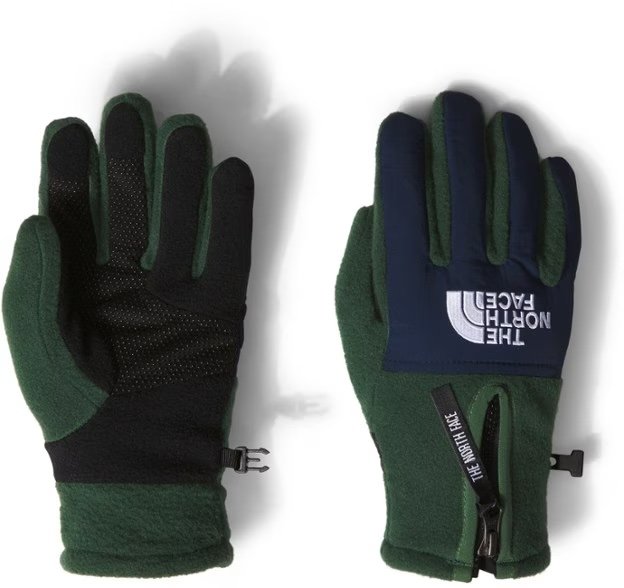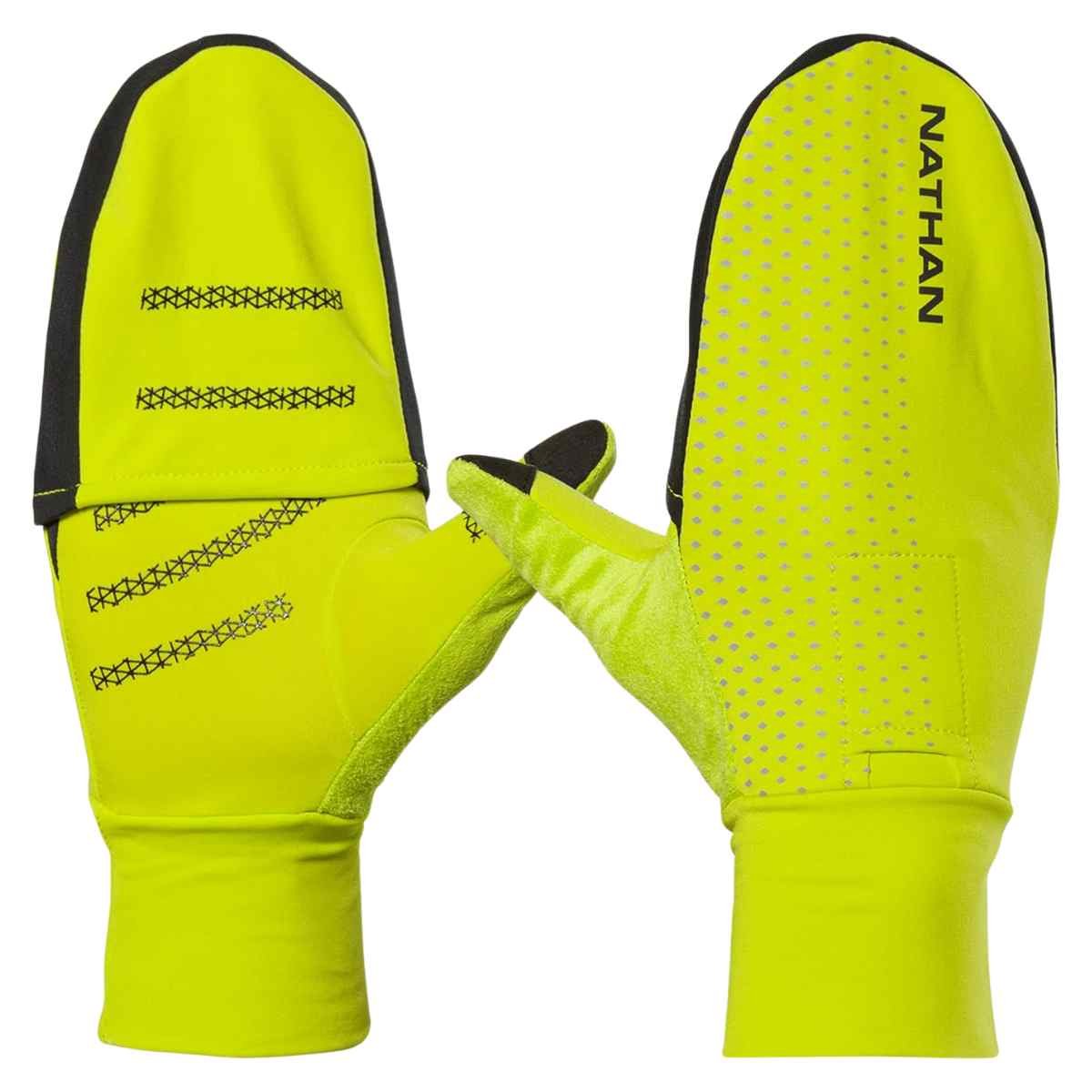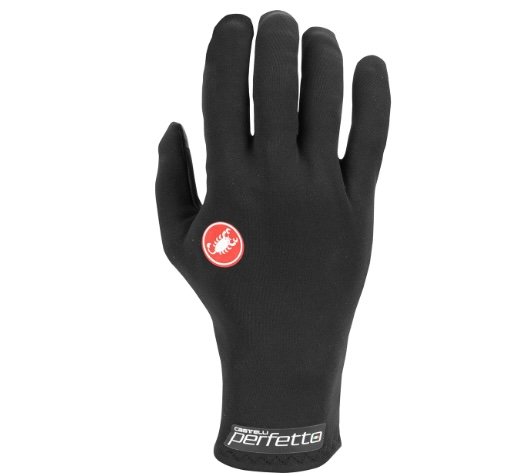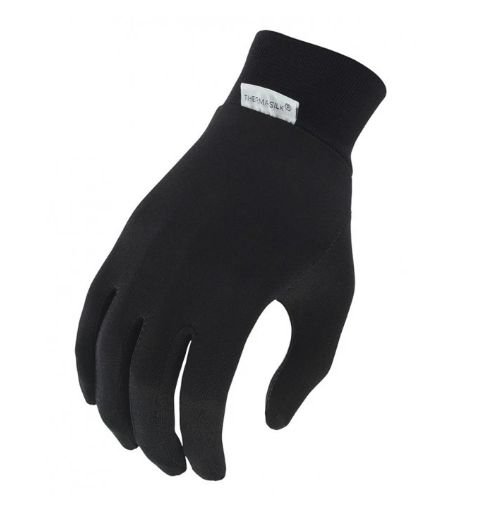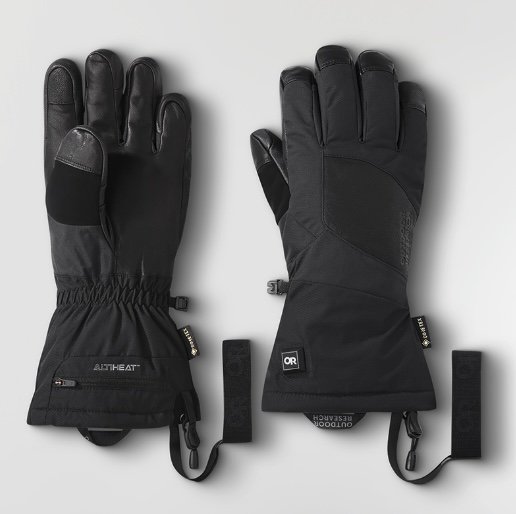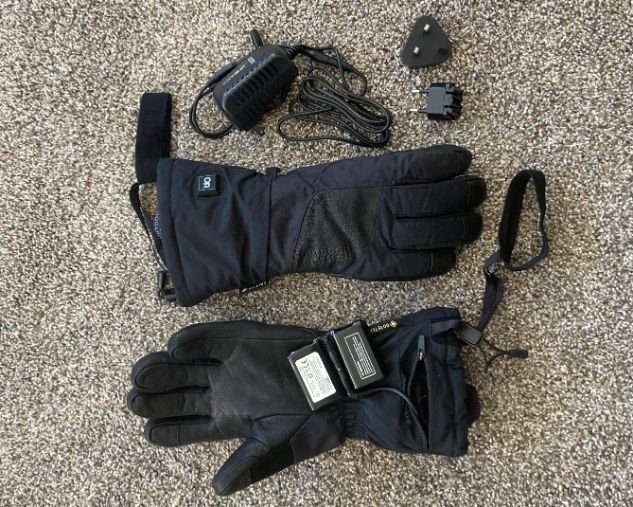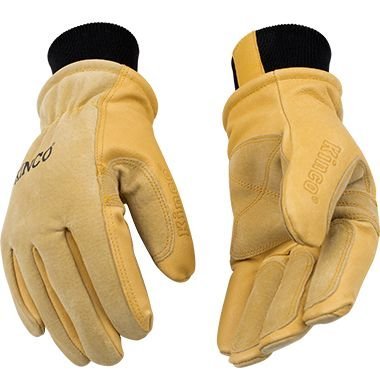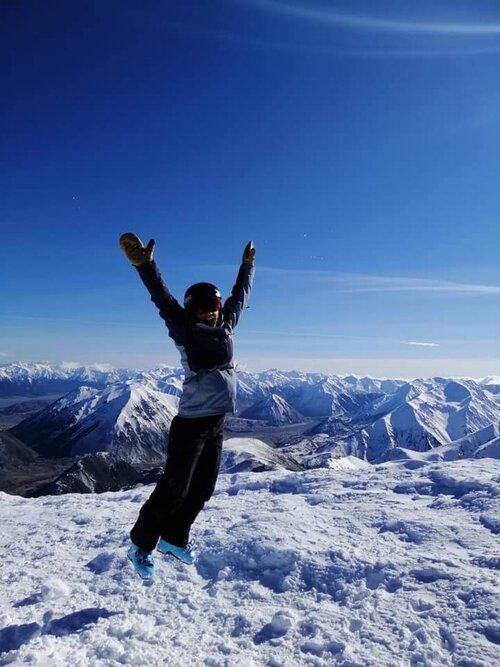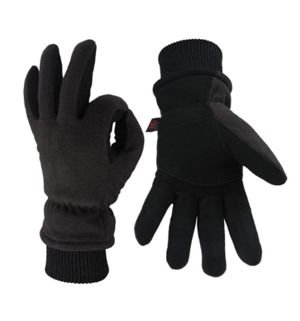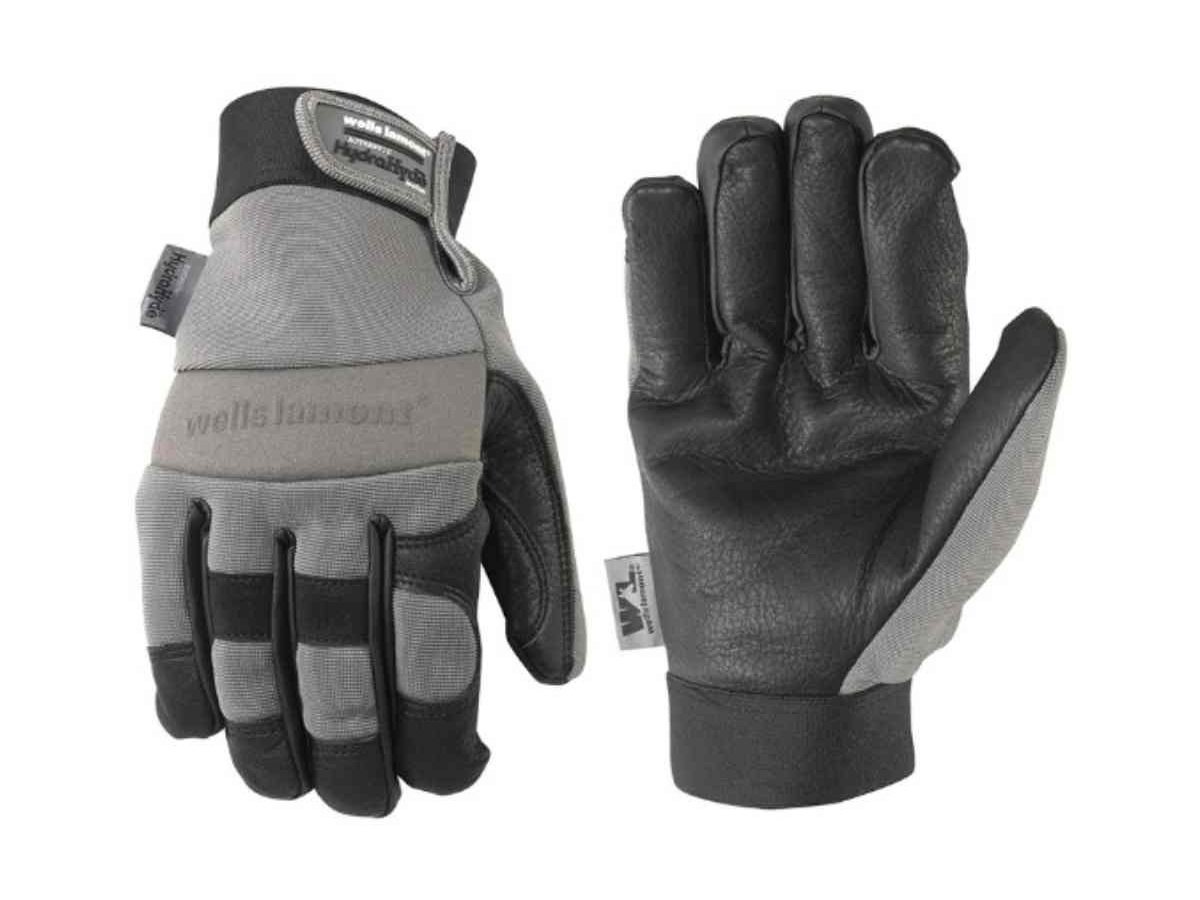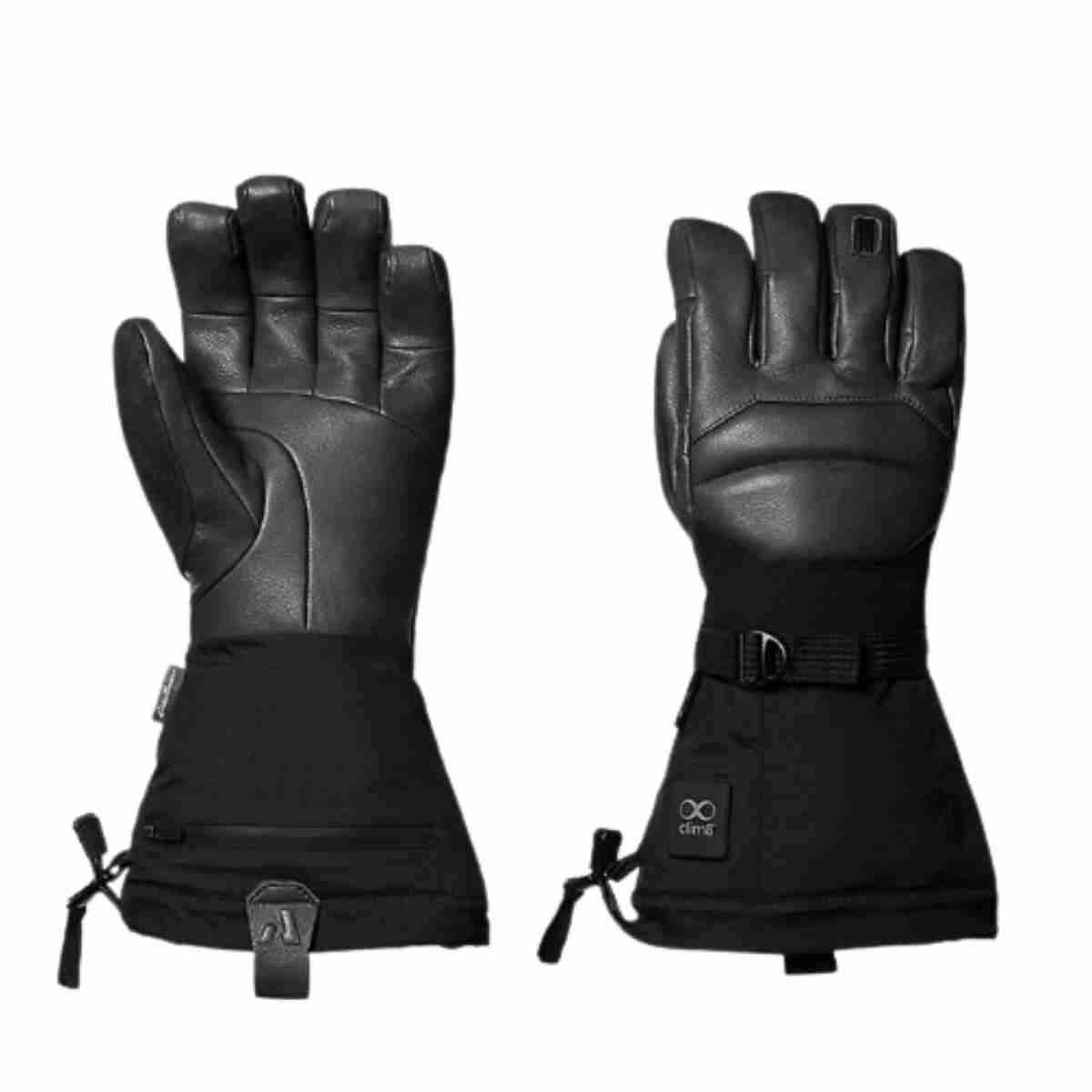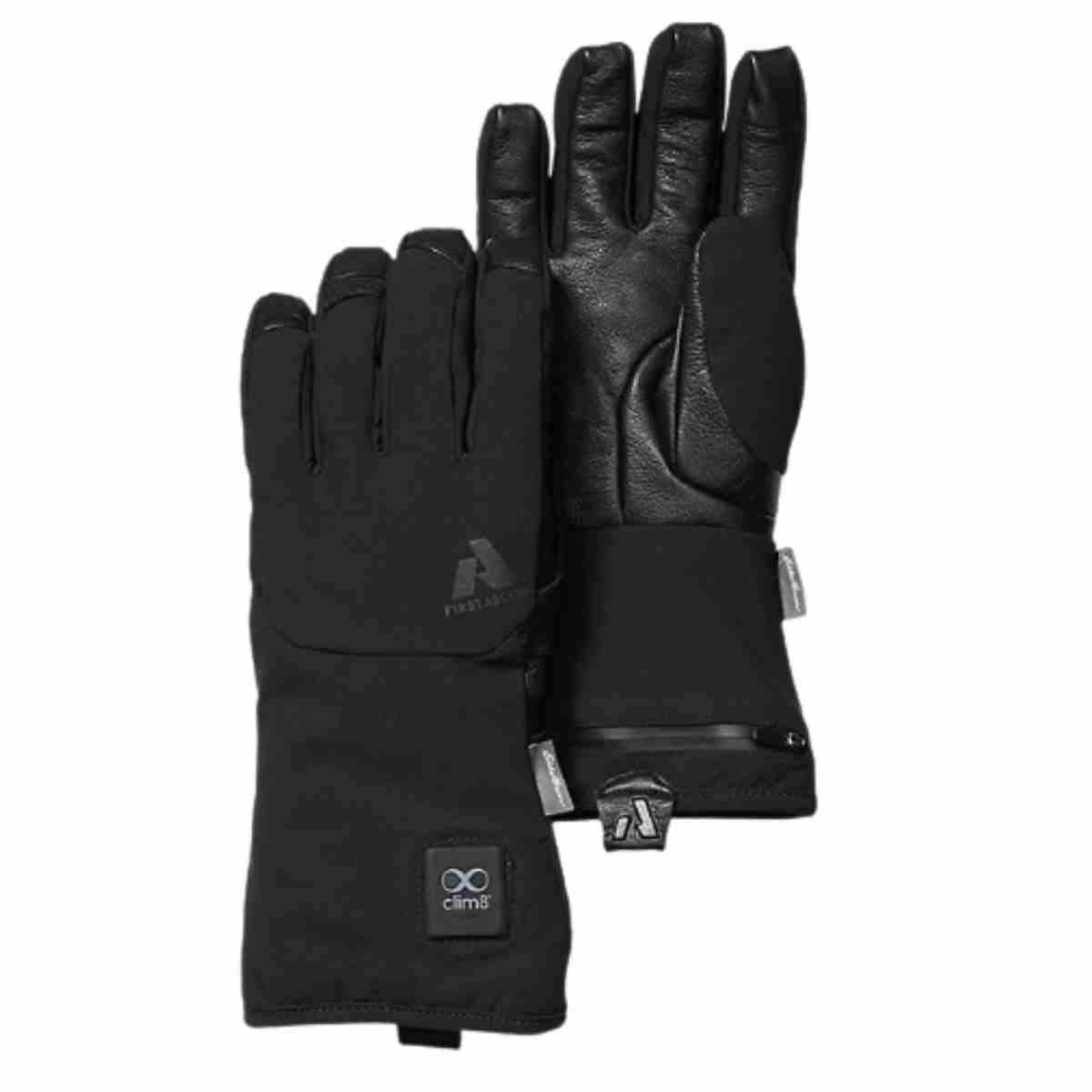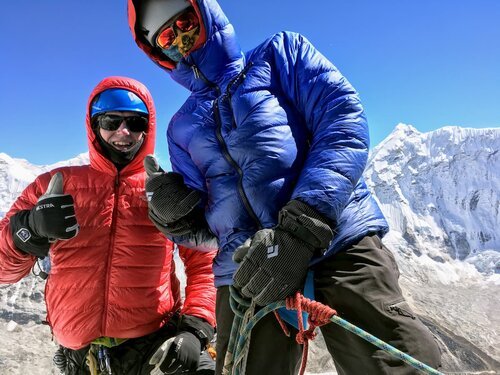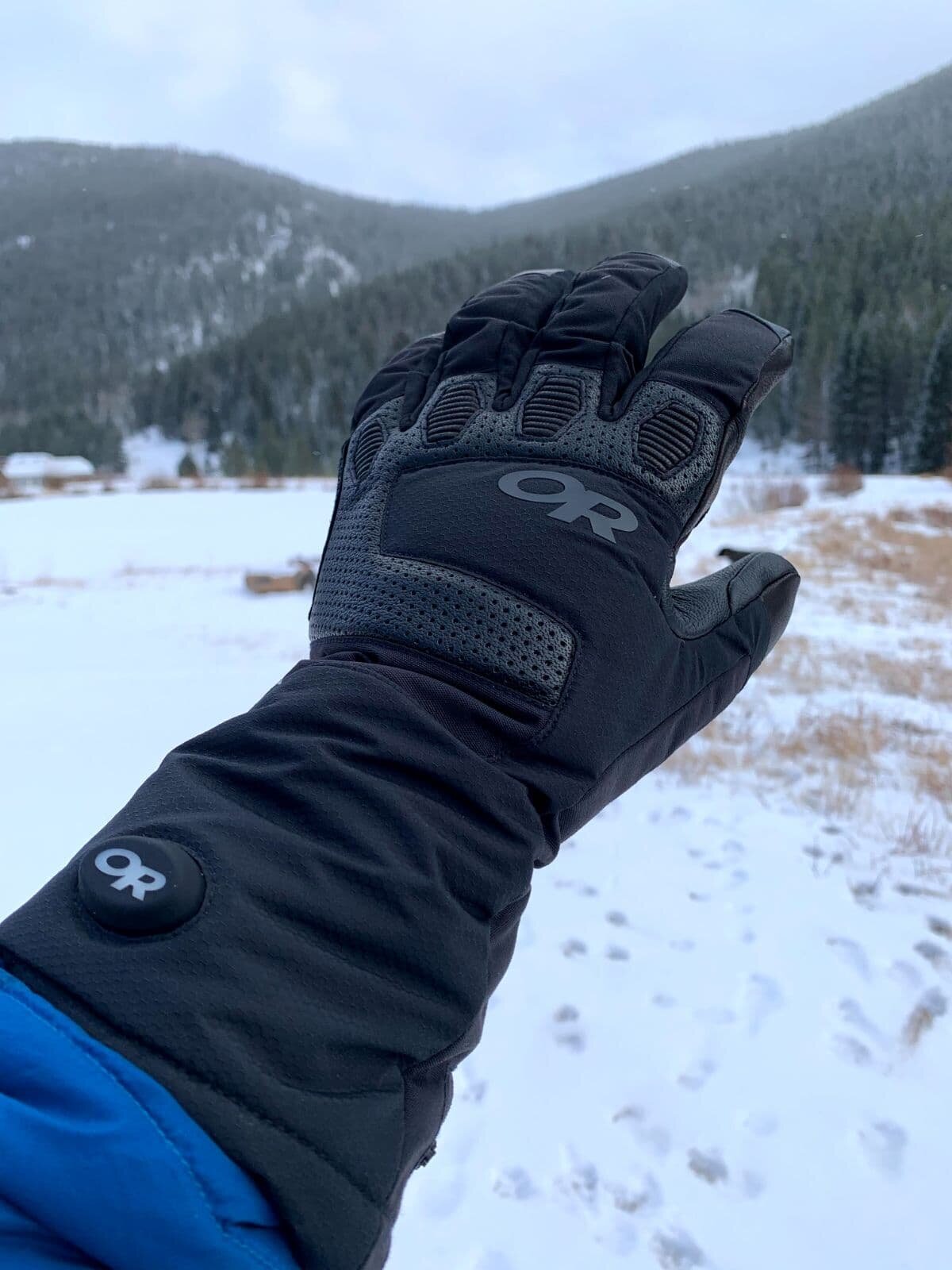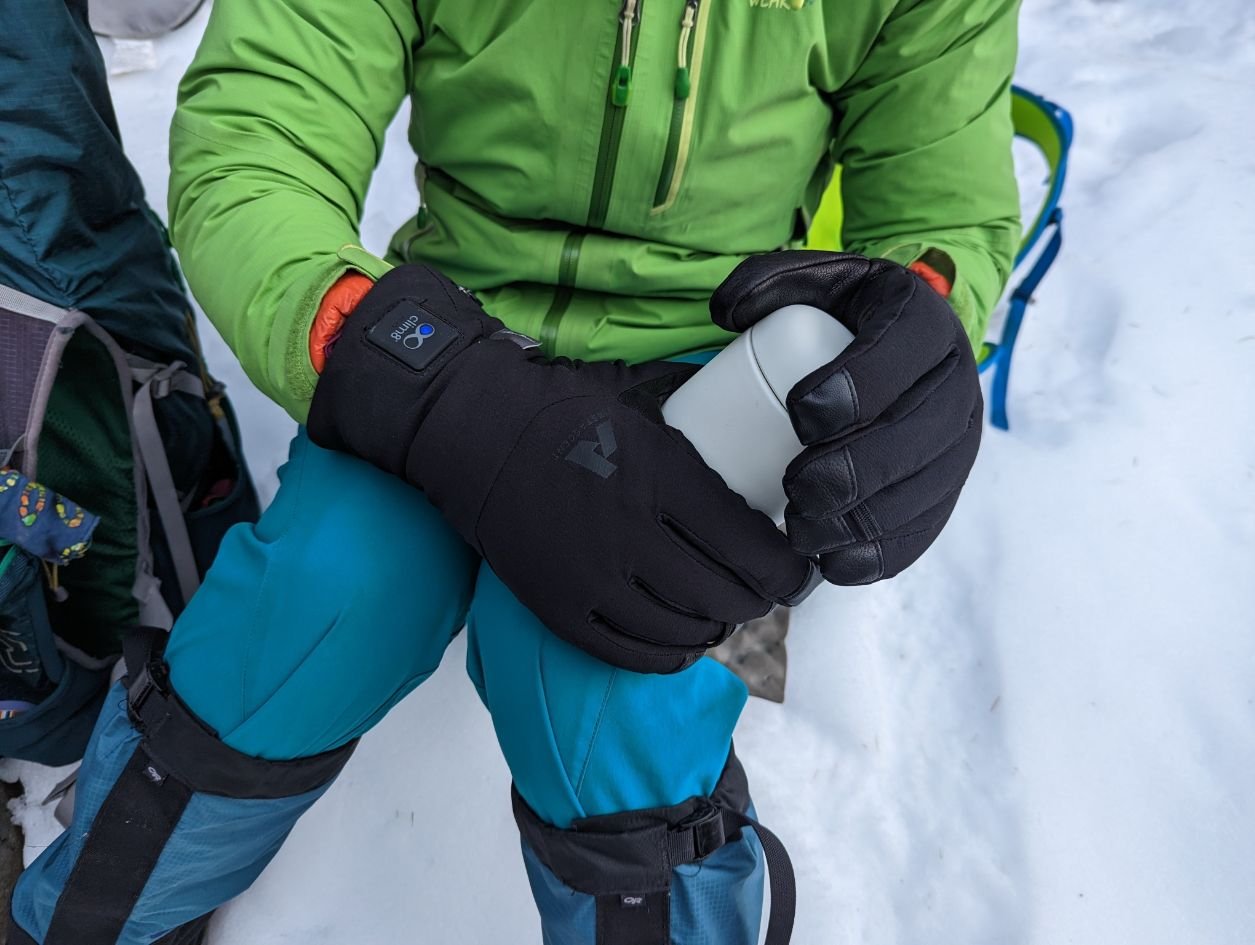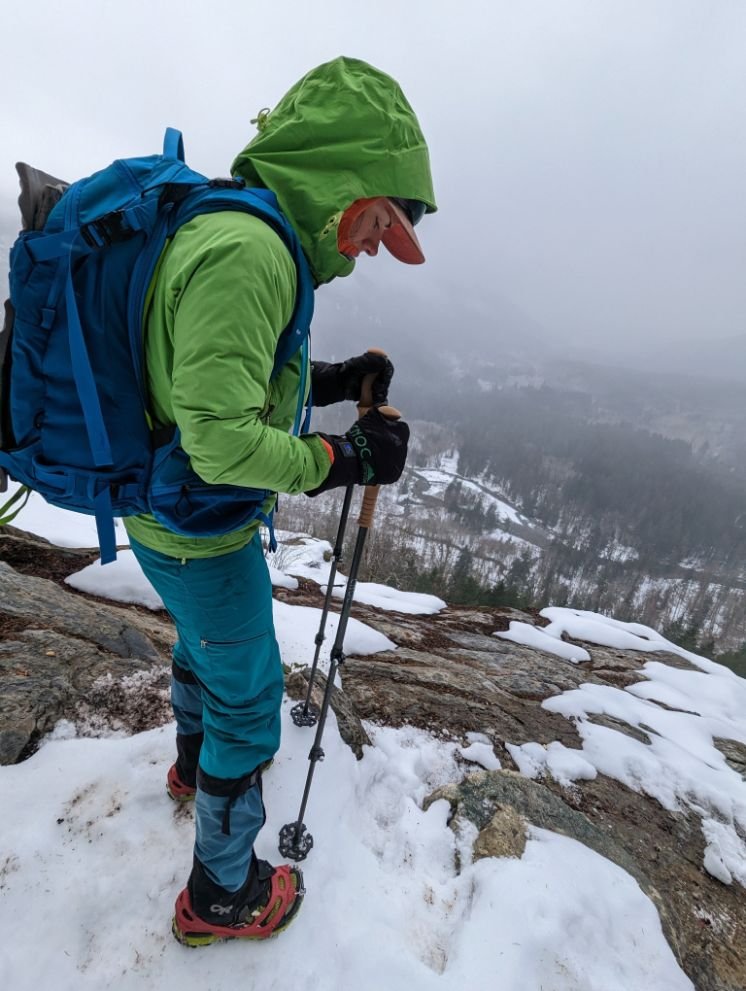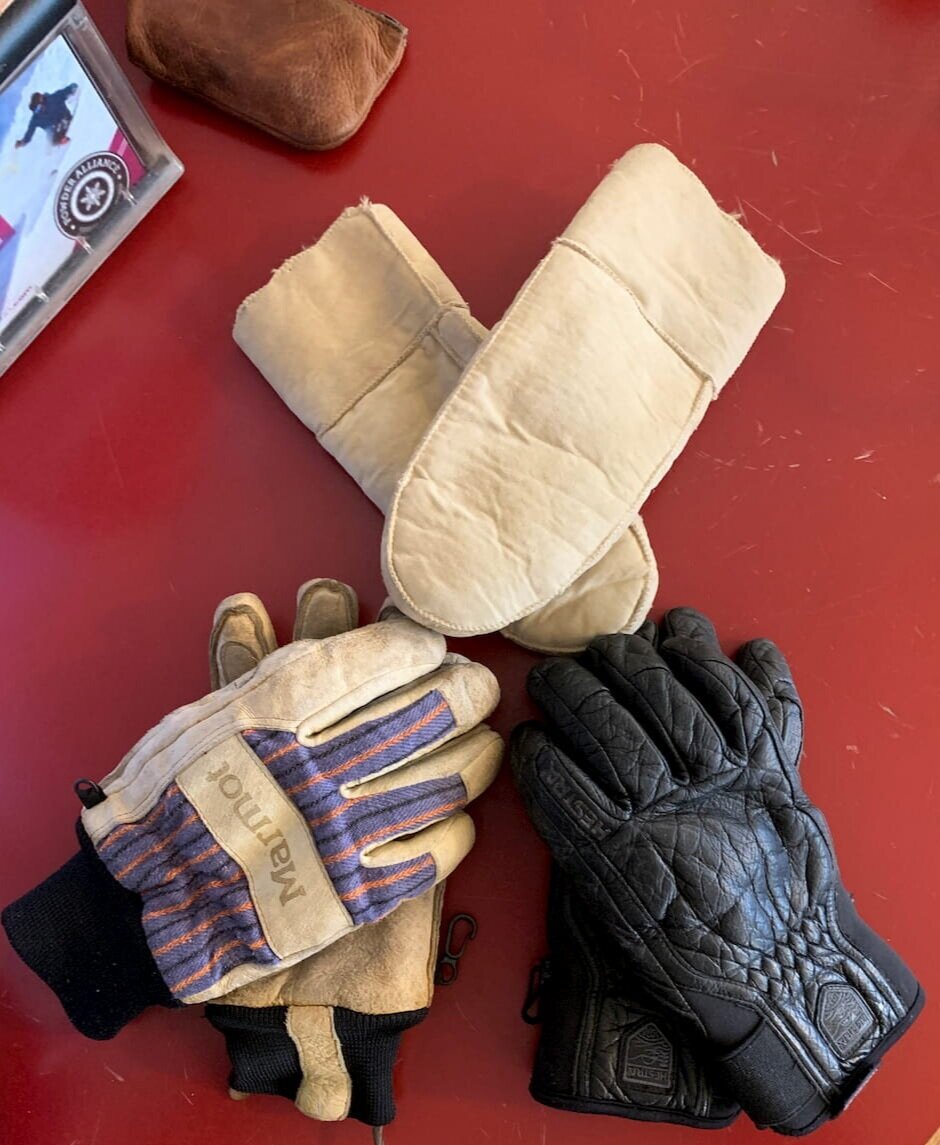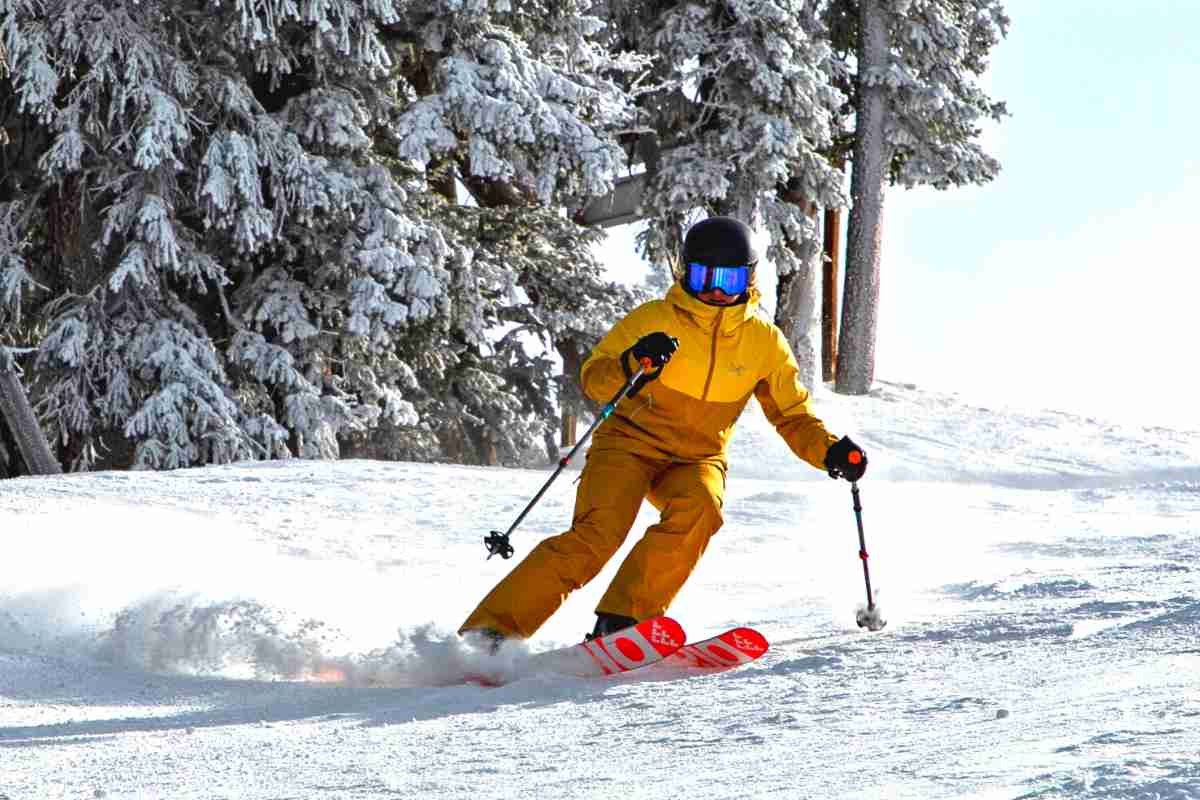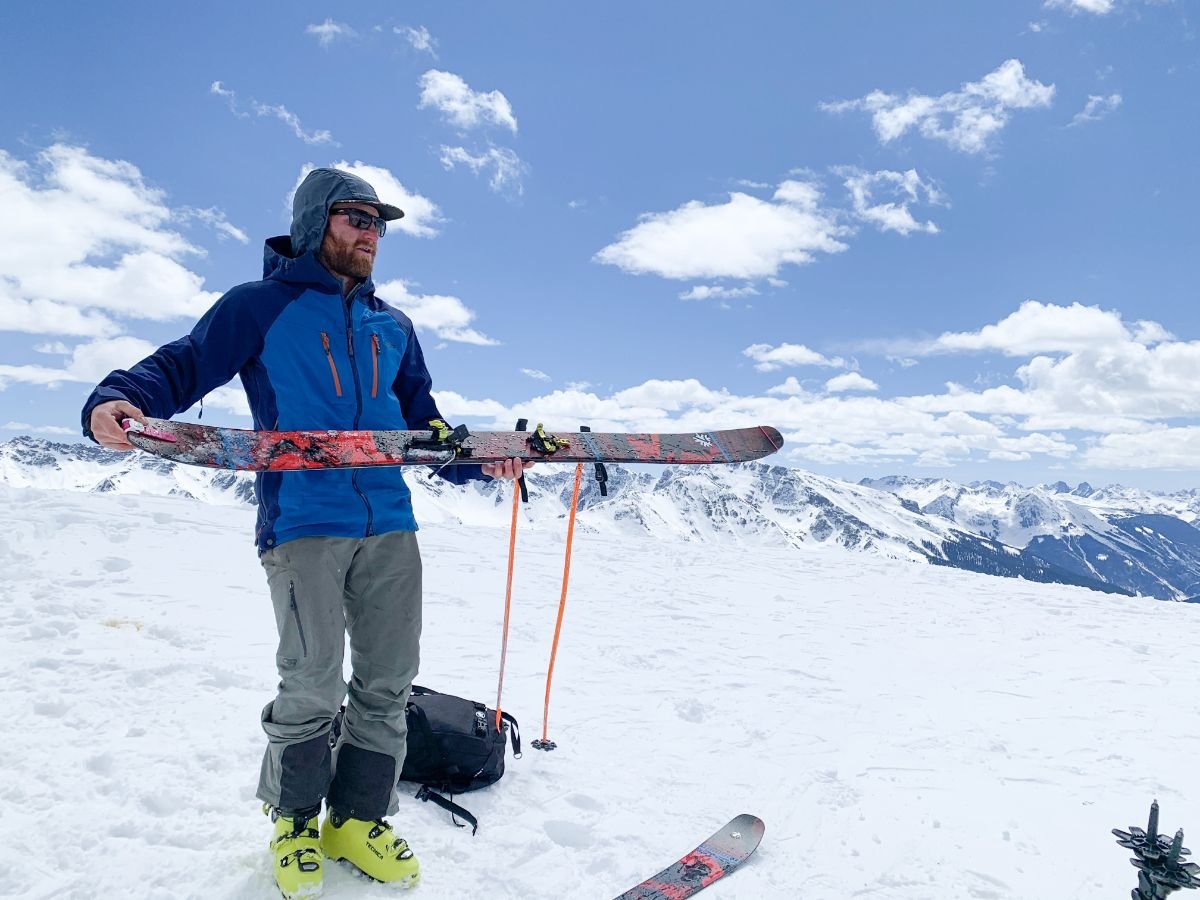Best Winter Gloves of 2025
Warm, thin, lightweight gloves for running, cycling, and extreme cold
A good pair of winter gloves can make all the difference for all-season running, cycling, hiking, and snowplay. Photo by Robert Curzon.
Updated January 23rd, 2025 with a new winner for best for extreme cold
Home > Gear Reviews > Apparel
A good pair of winter gloves can make all the difference for all-season running, cold-weather cycling, winter hiking, and snow play.
We researched the 100 most popular pairs to narrow down our picks for the best men’s and women’s winter gloves of the year.
Then we tested winter gloves from Maine to Alaska. I wore winter gloves saddling horses in snowstorms, as an emergency responder digging out trucks from roadside snowbanks, hiking across frozen lakes after bounding Alaskan huskies, and trudging through the fresh snow after a full day of skiing.
Lightweight, waterproof, and windproof, the best winter gloves aren’t bulky, offer great dexterity, and are guaranteed to keep your hands warm and dry outdoors.
Read on to find the best liner gloves, heated mittens, and gloves for running, cycling, hiking, extreme cold, touchscreen usage, and every kind of snowy adventure.
Need a warmer glove for skiing or snowboarding? Check out the Best Ski Gloves.
We create reader-supported, objective gear reviews independently selected by our editors. This story may contain affiliate links, which help fund our website. When you click on the links to purchase gear, we may get a commission — without costing you an extra cent. Thank you for supporting our work and mission of outdoor coverage for every body! Learn more.
Winter Gloves Comparison Table
| WINTER GLOVE | TREELINE AWARD | MSRP* | TOUCHSCREEN COMPATIBLE? | MATERIAL | INSULATED? | CLOSURE |
|---|---|---|---|---|---|---|
| The North Face Denali Etip Gloves Unisex |
Best Overall Read review |
$50 | Yes, 5 finger | Polyester fleece | Yes | Zipper on back of hand |
| Outdoor Research Alti II Gore-Tex Mittens Men's Women's |
Best for Extreme Cold Read review |
$199 | Yes | Gore-Tex, PrimaLoft, nylon | Yes | Cinchable gauntlet |
| Nathan Hypernight Reflective Convertible Mit Unisex |
Best for Running Read review |
$35 | Yes | 88% Polyester 12% Spandex Pro stretch | No | Elastic cuffs |
| Castelli Perfetto RoS Gloves Unisex |
Best for Cycling Read review |
$70 | Yes, index finger | Gore-Tex Infinium, fleece | Yes | Neoprene cuff |
| Terramar Adult Thermasilk Unisex |
Best Liner Read review |
$25 | Not easily | 100% silk | N/A | Elastic |
| Outdoor Research Prevail Heated Gloves Unisex |
Best Heated Gloves for Raynaud's Syndrome Read review |
$339 | Thumb, forefinger | Gore-Tex, EnduraLoft, leather | Yes | Cinchable gauntlet |
| Give'r 4 Season Gloves Unisex |
Best Waterproof and Windproof Read review |
$119 | No | Leather, Thinsulate, waterproof membrane | Yes | Wrist cuff, pull tabs |
| Achiou Winter Knit Gloves Unisex |
Best Touchscreen Read review |
$7 | Yes | Acrylic, polyester, spandex | No | Pull-on elastic |
| Kinco Premium Ski Gloves Unisex |
Best Budget Work Gloves Read review |
$43 | No | Leather, Heatkeep | Yes | Elastic Cuff and Tightener |
| MCTi Winter Waterproof Ski Gloves Unisex |
Best Budget Winter Gloves Read review |
$22 | Yes | Thinsulate, synthetic leather, waterproof membrane | Yes | Drawstring |
*We note any discounts we see on our Deals page, which is updated daily.
For more of our most popular Winter Gear Guide stories:
The Best Winter Gloves for Men and Women
Best Overall Winter Gloves: The North Face Denali Etip Gloves
Touchscreen Compatible? Yes, 5 finger
Material: Polyester fleece
Insulated: Fleece
Closure: Zipper on back of hand
What we liked: Warmth, durability and dexterity at a great price makes these an all around glove for most users
What we didn’t like: Won’t be the warmest gloves available
The North Face Denali Etip Gloves earned our award two years in a row for Best Gloves for Winter Hiking and Running because of their warmth, dexterity, and touchscreen compatibility. They hit the sweet spot of warmth, price, durability, and dexterity, making them a good choice for most winter outdoor activities, and our best overall choice.
The North Face Denali Etip
The author testing the North Face Etip Denali on winter chores. Photo courtesy Josette Deschambeault.
The North Face Denali Etip Gloves are mid-weight gloves made from fully recycled materials: Polyester (shell), nylon (back-of-hand overlay, polyester brushed tricot (palm lining), and TKA 100 polyester fleece (back-of-hand lining).
They’re warm and breathable, but not meant for extremely cold weather. Reviewers from Ireland, Michigan, and Colorado all praised the Denali Etip Gloves as great for mild to moderate winters.
One thing we like is since they are made from inherently breathable materials, these gloves do best in colder temperatures when used during high-output activities (such as running or hiking).
All five fingers are touchscreen compatible—the touchscreen conductivity is woven into the gloves, so rather than sporting obvious finger pads, they look like normal gloves.
As fleece-like gloves, they aren’t what we’d recommend for extreme cold—see our Upgrade Extreme Cold winner for a better option. That’s a better option if your gloves must be windproof and waterproof.
But for most uses and most winter scenarios, the North Face E-Tip Denali are a lightweight and packable option that gives the warmth you need.
We also like the zipper, which makes it easier to look at our hiking watch or running watch, which is often a challenge with most winter gloves.
They’re lightweight and compressible, so we think they work well for backpacking, running, cycling, where space may be at a premium. They easily fit in the pocket of our running hydration vest as well as in some of our smaller hiking fanny packs.
A close runner-up was the Ozero Thermal -30°F Suede Winter Gloves, but many reviews said that they were overkill for all but the coldest hikes, and they were often too bulky to be comfortable while running.
The Etips tend to run large, so consult the sizing chart before you buy!
Best Gloves for Extreme Cold: Outdoor Research Alti II Mitts
Waterproofing Shell Material: Gore-Tex Membrane, Pittards Armortan Leather
Insulation: Primaloft Gold
Removable Liner: Yes
Closure: SuperCinch and Elastic Cuff
What we liked: Liner and shell separate to make a versatile glove. The warmest non-heated glove we tested
What we didn’t like: May be too warm for many days. Some customers find that they run small
We chose the Outdoor Research Alti II Mitts as the Best Gloves for Extreme Cold because, well, they’re just warm. (Not to mention their waterproofness, durability, versatility, and comfort.)
The Alti II Mitts are a double-mitten construction — an outer Gore-Tex shell and a water-resistant liner mitten — that means you can wear them in three ways: just the shell, just the liner, or both. The liner and the shell connect with easy velcro, so no fussing with buttons or zippers or the like; just slide on the shells, and the velcro around your wrists connects the two. This gives the mitten a variety of situations to excel in, but most of all combine into a snowy-cold champion. (Trust us; the author was sweating when she finished shoveling snow off her pond hockey arena. Even in single-digit weather.)
We've tested these gloves from Alaska to Maine to Colorado to Washington for three years. We continue to recommend them for anyone who gets extremely cold hands when outdoors.
Outdoor Research Alti II Mitts
Men's
Women's
These gloves have PrimaLoft insulation in both the liner and the shell (340 grams, and 170 grams, respectively) to insulate against harsh conditions. You can also cinch them to fit onto your hand more easily, and the inner liner uses velcro to secure around your wrist more easily.
For our testers who have Raynaud’s syndrome, these mittens were toasty enough to keep even poorly-circulated hands warm in severe weather. The author’s friend, who does not have Raynaud’s but has very poor circulation, was thrilled to finally have warm hands in sub-zero temperatures. (It helps that these mittens come down to mid-forearm, so the warmth from your puffy jacket extends to the warmth of your mittens.)
But, this winter glove might be overkill as your daily-driver gloves unless you are highly susceptible to cold or suffer from Raynaud’s. For well-below-freezing temps, however, testers called these mittens were called “lifesavers” and "the only thing that works." The same can now be said for hauling wood and walking the dog in super-cold circumstances, according to one Colorado-based, cabin-dwelling tester.
Best Gloves For Running: Nathan Hypernight Reflective Convertible Mitt
Touchscreen Compatible? Yes, index fingers
Material: 88% Polyester 12% Spandex Pro stretch
Insulated: No
Closure: Elastic cuffs
What we liked: Versatile–warm as mitt and cooling as gloves, reflective, touchscreen compatible
What we didn’t like: Not best for extreme cold
The Nathan HyperNight Reflective Convertible Mitt is the ideal running glove for cold-weather runners who prefer the warmth and protection of a mitten and the dexterity of a glove. With a pull-over mitten option, you can choose your own adventure and adapt the gloves to fit your needs. Our tester for these gloves was Treeline writer and editor Becca Downs, a long-time competitive runner and distance running coach. She is prone to particularly cold hands, and tested these gloves in fall and winter in Indiana and Colorado. She claims these are the best running gloves she’s ever worn.
Nathan Hypernight Reflective Convertible Mitt
The Nathan HyperNight Reflective Convertible Mitt can be worn as gloves or mittens, and has a reflective design for nighttime visibility.
The gloves are 88% Polyester 12% Spandex Pro stretch and are wind resistant. They have grips in the palms, as well as touchscreen-compatible fingertips. Unlike many winter gloves that advertise they are touchscreen-compatible, these actually work really well and are helpful for using your phone without taking your gloves off. There's also a “nose wipe chamois” on the thumbs, which we find delightfully in-tune with many runners’ needs.
The reflective elements are useful for folks who run/walk in the dark and wish to increase their visibility. The HyperNight gloves come black with the reflective print and in hi-vis yellow with the same reflective print. On top of that, Nathan added a small pocket to the back of the gloves to hold a Strobe Light for increased visibility. We included these gloves in our Best Reflective Gear for Running in the Dark guide.
The gloves come in sizes XS to XL and we found sizing to fit as expected.
We tested these gloves in temperatures ranging from about 15 to 50 degrees. As someone with Raynoud’s, our tester wears heavy-duty wool mittens when it’s any colder. She also utilizes the mitten feature often for added warmth without sacrificing finger dexterity when you need it.
The amount of circulation you have in your hands, and the level of output (i.e., how much you’re exerting yourself) will play a role in how warm your hands get while you run. In general, the harder you’re working, the faster blood will pump through your body, and the warmer you’ll feel. While your individual hand-warming needs may vary from others’, we appreciate that the convertible mittens give some flexibility in that realm.
If you’re looking for a versatile running glove that adjusts to the varying temperatures you may experience as a runner, has running-specific features, and will help you stay visible and safer in the dark, we highly recommend the Nathan HyperNight Reflective Convertible Mitt.
Best Gloves for Winter Cycling: Castelli Perfetto RoS Gloves
Touchscreen Compatible? Yes, index finger
Material: Gore-Tex Infinium, fleece
Insulated: Yes
Closure: Neoprene cuff
What we liked: Very thin and lightweight, damping system on palm, good dexterity, warmth, waterproofness, windproofness, longer Neoprene cuff, lightweight
What we didn’t like: Designed to be form-fitting, so may feel too small at first
We chose the Castelli Perfetto RoS Gloves as the Best for Cycling because of their dexterity, durability, additional padding to minimize grip fatigue, and windstopping properties. From every reviewer and real-life tester, we heard about their warmth — down to the low 20s F.
That warmth is thanks to fleece backing, a longer neoprene cuff to stay under sleeves better, plus GORE-TEX Infinium fabric that wards off wet, wind, and cold.
Cyclists also approved of (and praised) the damping system on the palms that helps absorb jarring impact from your handlebars as well as the grippy silicon outlines around the palm for improved dexterity.
Castelli Perfetto Ros Gloves
Men's
Women's
These gloves are light (less than an ounce each, to be exact) and meant for chilly weather, but not too far below freezing. However, for versatility, windproofness and water resistance, there were few who objected to crowning the Castelli Perfetto RoS (which stands for “Rain or Shine”) gloves the winner.
Best Thin & Warm Liner Gloves: Terramar Thermasilk Glove Liner
Touchscreen Compatible? Yes, with some difficulty in practice
Material: 100% silk
Insulated: N/A
Closure: Elastic cuff and tightened
What we liked: Thermoregulates well, easy to insert into over-glove
What we didn’t like: Vulnerability to velcro and sharp gloves, best worn under other gloves
The Terramar Thermasilk Glove Liners were our top choice for Best Thin & Warm Liner Gloves due to their lightweight (they’re only 1.12 ounces!), their layering abilities, their silky-soft feel, and their warmth for such a thin glove. They are also the budget winner in our Best Ski Gloves guide when combined with the Kinco Premium Ski gloves.
The Terramar Thermasilk Glove Liners are lightweight gloves made of 95% silk and 5% spandex, which makes them both soft and stretchy to accommodate a variety of hand shapes. (They also come in XS-XL, which helps with different-sized hands.)
Terramar Thermasilk Liner Gloves
Josette Deschambeault, skiing in liner gloves at Cranmore Ski Resort, North Conway, NH. Photo courtesy of Cranmore Ski Resort and Dave Cowley.
Part of the reason that the Terramar Thermasilk Glove Liners are so effective as a liner glove (if you need a refresher, check out our definition of a liner glove here) is that they sport a soft exterior, which makes them easier to slide into an over-glove for effective layering. They are meant to have a snug fit, to fit under other gloves, as well—no complaints of bulkiness here!
In addition to their role in winter layering, reviewers love their quick-drying properties, their wicking properties (thanks to the silk), their touchscreen capabilities (since they’re thin enough to conduct heat from your fingers unless it’s very cold), and the fact that you can machine wash these (but don’t machine dry them!). Every reviewer reminded us to keep these gloves away from velcro and sharp objects! Because the silk is thin, it’s easier to snag or tear these gloves.
Terramar Thermasilk vs. Alaska Bear Liners
Although the Terramar Adult Thermasilk Glove Liners ultimately took our Best Thin & Warm Liner Gloves spot, our runner-up option was the Alaska Bear Natural Silk Gloves Thermal Liner Gloves. Also highly reviewed by entities like Adventure Junkies (Best Budget), and an Amazon Choice item (4.1/5), the Alaska Bear Liner Gloves are exceedingly similar to the Terramar Thermasilk Glove Liners—silk construction, wicking, thin, warm, and easily damaged by velcro. They were also cheaper by about the price of a cup of coffee. In the end, the Terramar Thermasilk Glove Liners were more widely reviewed and came more highly recommended.
If you’re worried about warmth, consider adding a thicker (but still budget-friendly) glove to wear over the Thermasilk. Used in combo with the Kinco Premium Ski Gloves, the Thermasilk gloves are the budget winner in our Best Ski Gloves guide.
Best Heated Gloves for Raynaud’S Syndrome: Outdoor Research Prevail Heated Gore-Tex Gloves
Touchscreen Compatible? Thumb, forefinger
Material: Gore-Tex, EnduraLoft, leather
Insulated: Yes
Closure: Cinchable gauntlet
What we liked: Heating system integrated into liners, breathability to keep from sweating, still warm gloves without the heating element
What we didn’t like: The price barrier is high, but for those who need the warmth, it can be worth it. Some users encounter fit issues.
For many people, heated gloves may be overkill. But for extremely cold temperatures (or people with Raynaud's), the Outdoor Research Prevail gloves are the key to staying warm and happy out in the snow.
We chose the OR Prevail Heated GORE-TEX Gloves as our best pick for Heated Gloves and Raynaud’s (we also chose it in our Best Ski Gloves Guide!) because of the customizable heat settings, waterproofness, windproofness, breathability, rechargeable batteries, battery life, and warmth without the heaters on. (Not to mention, they’re touchscreen compatible!)
Outdoor Research Prevail
Gloves
Mittens
Beautiful snowflakes around the intuitive heat setting button. Red (default) = most cozy, Yellow = medium. Green = low. Photo by Trey French
The need for heated gloves
We will warn you—the price nearly bowled us over. But if you have the money (and the need) for ultra-warm gloves, these are your pick. Outdoor Research also has an “Infinite Guarantee,” so the money you drop now will be worth it in the long run.
To turn on the battery, simply press the “OR” button on the top of your forearm—the LED will light up, so you know it’s working.
Insulation
The Prevail Heated Gloves have a Gore-Tex insert for water- and windproofness, but that allows for breathability—that way, your hands stay warm without getting sweaty! According to Gear Patrol, they have 333 g on the back of each hand, 200 g at the palm, and 133 g at the gauntlet. As a result, these gloves need to be warm even when the battery isn’t operating.
The glove shell is made from nylon with goat leather palms and fingers, and there’s molded foam protection over each finger for more warmth and durability. (A long gauntlet and wrist leashes don’t hurt, either!)
Battery life and charging
Reviewers really loved that the heating wires were woven into the liner rather than between the liner and the outer shell glove, like many other heated gloves on the market. And the battery life isn’t shabby, either—they last about 8 hours on the “low” setting, about 4.5 hours on the “medium” setting, and about 2.5 hours on the “high” setting. (Most other heated gloves only last up to 2.5 hours, too!)
people with Raynaud's were thrilled to find a warm glove without the battery packs and a lifesaver with the heaters going. To recharge, plug the charger into a wall outlet and insert the battery packs. General time from 0% to 100% battery is about six hours, and the indicator light will turn green.
Testing notes
One of our testers, notorious for piling on layers when everyone else is stripping them off on the uphill, was skeptical about testing heated gloves. He’s an avid adventurer who’s used to the Pacific Northwest chill but found Colorado’s high altitude even more of an issue for his cold fingers. He was shocked when he put them on (in 15 degrees at an outdoor brewery). “My big problem is that gloves are cold when I go to put them on, which means I have to warm up the glove to warm up my fingers. Having pre-heated gloves is a game-changer. I don’t have to flap my arms anymore while everyone else is eating snacks just to feel my fingers.”
Flaws but not dealbreakers
The OR Prevail Glove kit minus the simple mesh carrying sack. Photo by Trey French
Of course, the price is a deterrent for most people. Other dings were the weight (the batteries add about 9 ounces each), and the dexterity (more insulation = less dexterity). Still, multiple everyday users wrote in that these gloves were lifesavers that allowed them to be outdoors in the winter even as they experience Raynaud’s.
One Amazon reviewer was told by her doctor that the only way to stay pain-free from her Raynaud’s was to stay warm with heated gloves. She said, “I have tried everything you can imagine, from all types of gloves, Hot Hands packs with the iron pellets in them, and even tried two pairs of gloves, but so far, nothing has been as good as this new pair of [Outdoor Research Heated] gloves.” For up to two hours near 0℉, she was pain-free! “Even with the high price, all I can say is they work, they are the only thing that's worked so far, and that's saying something.”
Heated mittens or gloves?
So what about the Prevail Mittens? Our other tester prefers the mittens version of the Heated Prevail because of the fit. Some testers find that the fingers on the gloves can feel tight or stiff. Those with muscular fingers (like rock climbers) may also find the finger fit of the glove to run tight for the declared size. One of our testers is a climber who had no issues with the finger fit of the older Outdoor Research Lucents, but does have an issue fitting fingers into the Prevails.
A Treeline tester did struggle at first with getting the gloves on over their fingers in the new Prevails until they began to pack out with a few full days of lift-served skiing. They also found the fingers to be a little short, but the overall fit of the remainder of the glove fit as described in OR’s sizing chart. Read our section below on the debate behind Gloves vs. Mittens and the pros and cons of both.
Note that the Prevails are not meant to be used for backcountry skiing where an avalanche beacon is being used due to potential interference with the beacon, which poses a safety issue. That said, resort uphill skiing where no beacon is needed works great. In fact, one tester found themself a 30 minutes uphill skin and ski away from the truck at a resort at sunset with numb and painful fingers before switching the Prevails to the high setting and regaining feeling and comfort to get back safely.
The glove and mitten versions of the Prevails come with two batteries (one for each hand) that are rechargeable via a wall outlet. Outdoor Research includes two different outlet attachments for international use, as well. A convenient carry bag zips up all of your key components so you won’t lose the charger en route to the ski hill. Outdoor Research sells replacement batteries if batteries were to get lost or if you need more battery life for a day of skiing than a single set can provide. OR also recommends replacing the batteries yearly if you want to keep their original battery run time, as with all lithium ion batteries.
Best Waterproof and Windproof Winter Glove: Give’r 4 Season Gloves
Touchscreen Compatible? No
Material: Leather, Thinsulate, waterproof membrane
Insulated: Yes
Closure: Elastic cuff and leather pull tabs
What we liked: Heavy duty leather, adequate insulation for most conditions, reputably waterproof, and a good value
What we didn’t like: No touchscreen compatibility for full leather gloves like these
Give’r, a Kickstarter success story based out of Jackson Hole, Wyoming received great reviews from REI users and external media alike. In our testing, they got the job done—from a backcountry ski adventure to wrangling snow dogs to parking lot beers. Plus, they win for most stylish and are available in numerous colors and styles, including Huckberry exclusives. They also have inclusive sizing with availability from XS - XXL.
Give’r 4 Season Gloves
Testing the Give’r 4 gloves in Colorado snow. Photo courtesy Josette Deschambeault.
The Give’r 4’s are robust, inspire durability and longevity, and have been reported to have been used for farming, roofing, logging, hiking, and more, and keep on going. They also sport a 100% waterproof membrane, so rain and snow are no match for them on the slopes for all but the big ski powder days when a longer cuff may be desired. The liner is a 40-gram Thinsulate, which keeps the digits warm, and is layered with a reflective heat shield on the front of the hand for extra warmth.
One downside is that the Give’r 4 which like other leather gloves unless you get creative with breathing on the fingertips, is not touchscreen compatible. Still, if you’re looking for a leather glove (whether for fashion or function), we would highly recommend the Give’r 4 Season Gloves.
Best Touchscreen Winter Gloves: Achiou Winter Knit Gloves
Touchscreen Compatible? Yes
Material: Acrylic, polyester, spandex
Insulated: N/A
Closure: Pull-on elastic
What we liked: Anti-slip palm, great price for warm, comfortable touchscreen gloves.
What we didn’t like: Touchscreen feature not as capable in temperatures below 20°F. Will snag on velcro
We chose the Achiou Winter Knit Gloves as the Best Gloves for Touchscreen out of the hundreds of competitors based on their touchscreen compatibility, grip, warmth, comfort, and budget price (think the price of a burger and fries!). The Achiou Winter Knit Gloves overwhelmingly received positive reviews across the board for their effectiveness with touchscreens on phones and Smartwatches. Both everyday customer reviews and outdoor/clothing media were impressed by how the Achiou performed—especially for their budget price.
Achiou Winter Knit Gloves
Warmth and material
The Achiou Winter Knit Gloves are made from knitted acrylic with a brushed wool liner, with non-slip silicone triangles across the palms and fingers to help with grip. They also sport a stretchy elastic cuff to keep snow out. These gloves are breathable, moisture-wicking, and warm (but not for sub-zero temperatures). However, while these gloves are great with wind-resistance, they are certainly not waterproof.
The thumb, index, and middle fingers are touchscreen conductive for maximum screen compatibility.
Fit and Sizing
One thing to watch for is that these gloves tend to run slightly small. We advise you to go up a size if you don’t like skin-tight gloves. There are three sizes (medium, large, and extra-large), and multiple colors to fit every fashion. Be careful with these gloves around Velcro or sharp objects—they have a tendency to snag and pill up.
When we tested, we noticed when temperatures drop below about 20℉, the touchscreen fingers seem to become less effective. Until that threshold, most reviewers (especially Amazon reviewers) were ecstatic at the touchscreen performance. Even under 20℉, not every reviewer found this lack of sensitivity to be the case—but it’s worth mentioning if you live in an area that’s regularly colder than that. (This could also be caused bysmartphones’ aversion to cold, which can be remedied by keeping both the phone [and your hands] warm!). If you expect to be in temps under 20, we recommend the North Face Denali Etip Gloves instead.
Best Budget Work Glove: Kinco Premium Ski Gloves
Touchscreen Compatible? No
Material: Pigskin, polyester, nylon, suede
Insulated: Leather, Heatkeep®
Closure: Elastic cuff and tightener
What we liked: Work glove design lends durability to this affordable, functional, and ultimately durable ski glove at an attractive price
What we didn’t like: Not suitable for extremely cold winter days
We chose the Kinco Premium Ski Gloves as our best budget pick because of the bargain price, the materials, the durability, and the rave reviews from bargain hunters across multiple media channels.
Ski bums, ski patrollers, lifties, snowmakers, cat drivers, bus drivers, ranchers, farmers, truckers, snowplow operators, and anyone who’s ever stopped at Walmart to buy gloves before skiing will tell you, Kinco’s are the way to go. Numerous publications (including Outside Magazine and Powder Magazine) have written rave reviews for these budget gloves, and some have even written articles that border on love poems.
Kinco Premium Ski Gloves
Treeline Review tester Nicole Montgomery loves snow and her fingers stayed warm in the Kinco Pigskin mittens, the mittens version of our budget glove pick. Photo courtesy of Nicole Montgomery.
While the Kinco Premium Ski Gloves will not be the warmest glove you’ll own, they’ll certainly be the best bargain: $40 for gloves that are renowned for their durability isn’t a bad deal.
While the fingers and palm are made from the namesake pigskin leather, the back of the hand is canvas, allowing for breathability. (If you’re concerned about waterproofness, check out our How to Waterproof Your Gloves section!)
The knit wrists are constructed from polyester, which helps to retain heat and keep snow out but are not very water-resistant.
They are filled with Heatkeep thermal insulation and have a soft inner lining to wick away moisture.
Reinforced fingertips, knuckles, and palms are what give these gloves their durability. They were, after all, designed as work gloves.
Best Budget Winter Glove: MCTI Waterproof Ski Gloves
Touchscreen Compatible? Yes
Material: Thinsulate, synthetic leather, waterproof membrane
Insulated: Yes
Closure: Adjustable wrist buckles
What we liked: Great weatherproofness and functional pocket. Overall, excellent value in moderately cold conditions
What we didn’t like: A little bulky, and long dry times despite good breathability
We chose the MCTi Waterproof Winter Gloves as the Best Budget Waterproof and Windproof Gloves out of their competitors based on their waterproofness, windproofness, warmth, comfort, and dexterity—and affordable price.
The MCTi Waterproof Winter Gloves are made from windproof polyester, 3 layers of Thinsulate, waterproof TPU (a waterproof polyester material), and a soft cotton interior. The cotton may be the cause of the lengthy drying process complaints from reviewers–one reason why we didn't win for best budget ski gloves. Still, if you don't plan to get your gloves wet, you'd be hard-pressed to find a glove this warm and functional at this price.
MCTI Waterproof Ski Glove
Materials and durability
They also have rubber fingers for reinforced durability and a polyurethane coating on the palm. A zippered pocket on the back of the hand (big enough to fit keys, an ID, cash, or a disposable hand warmer) and adjustable wrist buckles are bonus features on an already-stellar glove.
Value for the price
While we ultimately picked the MCTi Waterproof Winter Gloves for our Best Waterproof and Windproof Gloves, the Give’r 4 Season Gloves were a close second and admittedly are much more stylish. The Give'r received great reviews from REI users and external media alike–and we really enjoyed wearing them all winter in Maine.
But at the end of the day, the MCTi Gloves were ⅓ of the price of the Give’r 4 Seasons.
There were a few complaints of the MCTi Waterproof Winter gloves being thick and bulky, mostly for conducting fine motor skills. They were also dinged for being difficult to dry out (although great at wicking and breathability). The Give'r 4 Season Gloves didn't feel quite as thick or bulky, but again, were more expensive. So it's up to you to decide what works best, but we think most people will be served fine with the MCTi Waterproof gloves.
Touchscreen Compatible? No
Material: Leather, Gore-Tex, PrimaLoft
Insulated: Yes
Closure: Pull top open/close
The Arc’teryx Fission SV Gloves (also available in mittens) are our previous winner for Best Gloves for Extreme Cold for their durability, warmth, breathability, and water resistance (SV: severe weather).
However, we reached out to Arc'teryx and they are out of stock.
Despite their price, we were blown away by the quality, durability, and dextrousness. Arc’teryx designed these leather gloves with a softshell exterior to balance breathability with warmth. (The 3 types of Primaloft around the glove help with that, too.) If you can find a pair, we recommend them. Otherwise, we highly recommend the Outdoor Research Alti II and they are our new overall winner for Best for Winter Gloves for Extreme Cold. Plus, they're less expensive, too!
Touchscreen Compatible? No
Material: Silk
Insulated: N/A
Closure: Pull-on elastic
The Alaska Bear Natural Silk Liner Gloves were tied neck and neck for our Best Thin & Warm Liner Gloves pick, the Terramar Adult Thermasilk Glove Liners.
The Alaska Bear Silk Liner Gloves were highly reviewed by entities like Adventure Junkies (Best Budget) and an Amazon Choice item (4.2/5). The Alaska Bear Liner Gloves are similar to the Terramar Thermasilk Glove Liners—silk construction, wicking, thin, warm, but also easily damaged by velcro. They were also slightly cheaper than the Terramar Thermasilk Glove Liners.
In the end, the Terramar Thermasilk Glove Liners were more widely reviewed and came more highly recommended than the Alaska Bears Liner Gloves.
Alaska bear natural silk liner gloves
Touchscreen Compatible? Yes, with some difficulty in practice
Material: Faux suede, waterproof membrane
Insulated: Yes
Closure: Elastic knit wrist
The Ozero Waterproof -30°F Winter Gloves were in our top choices for the Best Gloves for Winter Hiking and Running. But many reviews said that the Ozero Winter Glove was overkill for all but the coldest of hikes, and they were often too bulky to be comfortable while running. They were also considered for the Best Waterproof and Windproof Gloves, but ultimately, the MCTi Waterproof Winter Gloves were more highly and more positively reviewed.
The Ozero get high praise from New York Magazine’s The Strategist, Men’s Health, and Business Insider.
Ozero -30°F Waterproof Winter Gloves
Touchscreen Compatible? No
Material: Leather, Thinsulate, spandex
Insulated: Yes
Closure: Elastic knit wrist with velcro strap
What we liked: Prioritizes dexterity while retaining some warmth at an amazing price
What we didn’t like: Some may wish for more insulation
Don’t be fooled by the “work glove” name. The Wells Lamont HydraHyde Winter Work Gloves, was our former winner for Best Cycling glove.
While we’re still fans of these gloves and think they make a good budget cycling glove, ultimately, we decided that the Perfetto RoS Glove—an actual dedicated cycling glove—will serve most cyclists better. With minimal seaming, a little cushion against the handlebars, and lightweight GORE-TEX Infinium windproof and waterproofing, the cycling-specific design won us over.
The HydraHydes are made from leather, a spandex backing, and 3M Thinsulate, which makes them ideal for operating equipment (like bikes) with cold hands in adverse weather. They also sport a velcro wrist to ensure that snow and wind won’t creep down onto your hands.
Wells Lamont Hydrahyde Winter Work Gloves
The HydraHydes also are not fully windproof, although they have a wind-resistant barrier woven into the backs of the hands. They’re meant to reflect heat while remaining breathable, perfect for activities like cycling.
These gloves are meant to be dexterous and highly functional from grip to fine-tuning. They’re tough enough to take on cold hands in windy, rainy, and snowy weather without compromising mobility. While they don’t have a lot of extra padding or insulation, for most biking commutes, that’s a good thing. You don’t want your hands swaddled and stiff while cycling. Rather, you want to be able to move your hands easily to switch gears or pump the brakes!
While these are technically designated as men’s work gloves (and come in men’s sizing), they work well for women, too. These are an affordable pick in the world of winter cycling gloves. Bicycling Magazine’s most affordable option was slightly more expensive, while their most expensive pick topped is more than twice the price.
Touchscreen Compatible? No
Material: Leather, PrimaLoft, WeatherEdge
Insulated: Yes,
Closure: Cinch at static wrist closure plus cinch at end of gauntlet cuff
A worthy contender for the Best Heated Gloves for Raynaud’s Syndrome, the Eddie Bauer Guide Pro Smart clim8 heated gloves were just edged out by the OR Prevail Gloves. The Eddie Bauer clim8 gloves are the first heated gloves in the outdoor industry to use intelligent heating technology–AI-powered gloves to sense when to heat.
Some standouts of the clim8’s are that they feature a hands-off user system once you heat the gloves up with an app to determine your heating preferences. From there, the gloves turn on when you wear them.
Eddie Bauer Guide Pro Smart Heated Gloves
We might be splitting hairs here, but when the battery died (happened on the Prevails, too), they did seem marginally warmer than the Prevails when not running the heating element. This could be due to slightly warmer conditions testing the EB clim8, which was around 25-30° F, or due to them fitting just slightly more roomy relative to the Prevails, and potentially encouraging better circulation.
With a similar construction, battery run time, and warmth, we were impressed by the clim8 from Eddie Bauer. That said, already being in a bulky and heavy glove category, they measured out to be 10.5oz in relation to our 8.3 oz OR Prevail gloves in a size Small (7). They were also higher volume, especially in the cuff area.
The clim8’s are also not touch screen compatible, in case you’re trying to use your phone on the lift without removing the gloves. Since the heat is controlled by the phone app, we were disappointed we had to take off the gloves in order to warm up our hands.
Overall, being similar in price to the Prevails, and with a slightly less polished finish, we feel more comfortable recommending the OR Prevails if you’re considering heated gloves.
Touchscreen Compatible? No
Material: Leather, PrimaLoft, WeatherEdge
Insulated: Yes
Closure: Elastic cuff
The Eddie Bauer Guide Pro Lite Smart Heated Gloves are a lighter-weight version of the Eddie Bauer Guide Pro Smart gloves above. Like the Smart Pro, these Eddie Bauer clim8 gloves are the first heated gloves in the outdoor industry to use intelligent heating technology–AI-powered gloves to sense when to heat. The main difference is that they weigh less.
We tested this pair and had similar results with the Smartphone app. Our tester found the location of the battery on the inner wrist to limit range of motion.
Eddie Bauer Guide Pro Smart Heated Lite Gloves
Treeline Review writer Kate Hoch tests the Eddie Bauer Guide Pro Lite gloves on a winter backpacking trip. Photo courtesy Kate Hoch.
The clim8’s are also not touch screen compatible, in case you’re trying to use your phone on the lift without removing the gloves. Since the heat is controlled by the phone app, we were disappointed we had to take off the gloves in order to warm up our hands. There was not an easy way to monitor the battery level without looking at the app, which required taking off gloves to manage the touchscreen.
What Type Of Winter Glove Do I Need?
Treeline Review writer Matt McDonald testing gloves. Photo courtesy Josette Deschambeault.
Not all gloves are created equal. While some gloves are meant for opening the door to your local coffee shop, grasping a shovel to plow out the driveway, or staying toasty at hockey practice, others are meant to be battered by wind, snow, slush, and ice for hours at a time while keeping your hands toasty, dry, and free of sweat as you slash powder turns across open bowls.
If you’re looking for a ski glove, check out our Best Ski Gloves Guide here!
Ski gloves are generally waterproof, insulating, and dexterous. They need to be so in order to endure -12 degree blizzards with 30 mph winds (as the author unfortunately found out one blustery day in Colorado), adjust boot buckles, text friends what lift line you’re in, and grip onto ski poles on a chilly backcountry skin-track.
However, ski gloves are not always the most dexterous, or practical for activities like driving, running, or cycling. They tend to be bulky, whereas winter gloves tend to be slimmer and more versatile. If you’re looking for a pair of gloves to hand out hot chocolate at the game, or commuting daily, we’d suggest winter gloves over ski gloves.
Ski Mountaineering Guide Brady McGuire uses specialized ski gloves, but they aren’t always the most practical for activities like driving, running, or cycling. Photo courtesy Brady McGuire
Gloves Versus Mittens
Some of us grew up nostalgic about mittens; others of us want our fingers free to use at all times. Here’s the skinny on both styles:
Gloves
The biggest selling point for gloves is the separation of fingers. Some folks prefer to have their fingers individually insulated, or just don’t like their fingers to touch. For most, it’s about having the full dexterity of all 5 digits. Where it’s nearly impossible to grip into ropes wearing mittens, for example, gloves allow the rope to flow through each finger, making knot-tying that much easier. With all 5 fingers mobile, activities like buckling ski boots, zipping up jackets, and picking up that tissue pass that fell out of your pocket are infinitely easier.
Mittens
Every mitten-lover we spoke to choose their childhood classics for one huge reason: warmth. Keeping your fingers together in the mitten cocoon allows for natural body heat to radiate and warm up the rest of your fingers. (It must be said, of course, that some mittens have a removable liner with separated fingers for additional insulation, but they’re all wrapped up in a mitten outer shell.) Most mitten fans liked the simplicity of not wrestling with individual fingers when they put on or take off their hand-warmers. The majority wanted to be able to wiggle their fingers freely!
Many of our favorite models are available in both mitten and glove versions.
What are liner gloves?
Essentially, the difference between gloves and liner gloves boils down to insulation. Liner gloves are meant to be worn under thicker gloves as a boost in warmth. If you need to take off the outer gloves to perform fine motor skills (holding a key, picking up a paper, zipping up jackets), then liner gloves ensure that your skin isn’t exposed to the elements, providing warmth and dexterity in the short-term.
While liner gloves can be worn on their own (generally on warmer days or on high output activities like cold-weather running), most of the time, a liner glove will be too cold to do too much outdoors on their own.
Liner gloves are good “extra” gloves to keep in your pockets for chilly football games, driving on a cold morning, or holding the stop sign outside of school (the classic example is the Terramar Thermasilk glove liner).
Generally, liner gloves are not waterproof, nor do they have a surplus of insulation. They're often made of silk, merino wool, polyester, and nylon. Although you'll see them for sale, we would recommend staying clear of cotton gloves as liners, as they lack almost any insulating ability when wet.
A fleece glove or wool glove may be warm enough on its own for summer, but without additional synthetic insulation, won't do much for cold hands in the winter.
Liner gloves are generally better for dexterity and for touchscreen compatibility than most gloves. That’s one reason why liner gloves are popular for summer use when camping and backpacking in mountainous areas where temperatures can get cool at night. You may even see some fingerless glove options for liners. These could work for you if you know you'll need high amounts of dexterity for short periods of time.
Other types of gloves for winter adventures
Nicole Montgomery loves snow (and her winter mittens). Photo courtesy of Nicole Montgomery.
Depending on how you plan to spend your time outdoors, you might find these glove types come in handy:
Heated gloves: For those whose hands get cold no matter what, heated gloves bring battery-powered warmth to the mix. While they’re pricier and require charging, they’re a game-changer in extreme conditions.
Softshell gloves: Flexible and lightweight, softshell gloves are ideal for high-output winter sports like cross-country skiing. They’re generally wind-resistant, breathable, and keep you comfortable in mild conditions, though they aren’t fully waterproof.
Leather gloves: Durable and naturally water-resistant, leather gloves are a classic for both skiing and winter work. With regular treatment, leather holds up well against the elements while offering good warmth.
Waterproof breathable gloves: Gloves with waterproof membranes (think GORE-TEX) are a solid middle ground, balancing warmth and water resistance. While these gloves tend to be a bit bulkier, they perform well in tough winter weather, whether you’re skiing, hiking, or handling icy conditions.
Buying advice
The author in her happy place. Loveland Ski Resort, Colorado. Photo courtesy Josette Deschambeualt.
For a winter glove to make it onto our contender list, they had to meet the following criteria. We chose our award-winners from the packs that made our contender list.
Warmth
It goes without saying, but gloves should be warm. Out of the 100+ gloves that we researched, we looked for gloves with designs built to keep cold out and warmth in.
However, it’s good to remember that some gloves can be too warm for your activity. (Most people aren’t going to need Rab’s Expedition 8000 Mitten, which is designed for high-altitude mountaineering on peaks like Denali.) Heated gloves might be overkill for your stroll through the park, but might be perfect for sub-zero temperatures while walking the dog. Still, we realize most people want a warm glove for winter.
Ski gloves have superior waterproofness and windproofness. Josette Deschambeault getting some powder runs in a secret stash outside Hakuba, Japan. Photo courtesy of Bill Glude.
Waterproof & windproof
One of the biggest ways to lose heat is through wind and water. (Both absorb heat from your skin when they contact you!) With that in mind, we researched gloves that were waterproof and windproof. We wanted to ensure that the gloves we recommended would not just hold up in 10℉ weather, but that they could withstand a -20℉ windchill, too. And since snow is just frozen water, it was a no-brainer to ensure that the gloves you use to play outside shouldn’t get soaked with the first snowball.
Durability
As an eco-minded gear review site, we believe more durable gear means less gear that ends up in a landfill. High-quality materials are always on the top of our lists, and we were looking for the best—Gore-Tex, leather, high-loft synthetic insulation, and more. We researched gloves that had withstood not only temperature tests, but rugged use, too. For that, we looked to guides, outdoor professionals, rescue workers, and the military for their take on “heavy hitters” that could handle a hard day on the slopes, as well as a hard day’s work. At least one of our options qualifies as a winter work glove for this reason: because even when you're looking for hiking gloves, we think you'll want the one that will last (and has great dexterity—see below).
If you’ll be handling ropes, gloves with good dexterity is a must. Thumbs up and shakas for warm hands on Island Peak, Nepal. Mountaineering Guides Brady McGuire (left) and Rob Caldwell (right). Photo courtesy of Brady McGuire.
Dexterity
No use wearing gloves if you can’t use your hands! We specifically looked for gloves that would allow for as much dexterity, grip, and flexibility as possible, without compromising other key criteria. While dexterity was one of the most common words in our negative reviews, it makes sense—gloves are a natural hindrance to our everyday dexterity. Our goal was to find gloves that made it easy to open a car door, grip a ski pole, and pluck some pocket bacon out of your jacket.
Price
There is a myriad of cheap gloves and mittens on the market, and while some of them may hold well for a time or a specific activity, many of them were about as warm as you could expect from gloves that cost as much as a latte. While the majority of our picks aren’t on the cheapest side, we researched the best budget options, too. We came up with a good range of budget items, mid-range gloves, and upgrade picks, as well.
Touchscreen capabilities
It’s no fun wearing gloves if you can’t take pictures of the snow. We looked for the best gloves with touchscreen capabilities (preferably on multiple fingers) to ensure you can capture the spirit of the season without compromising your fingers.
The author testing the Outdoor Research Lucent gloves in Maine. Photo courtesy Josette Deschambeault.
Insulation Types (How to choose REI type stuff)
fleece
Fleece is a polyester often used as a next to skin liner fabric on warm gloves, the sole fabric on lightweight gloves used alone, or as the first of several glove layers that one might wear on an outing where activity levels fluctuate. It’s going to work well in these layering systems, but doesn’t provide warmth against wind, and isn’t the most durable standalone fabric. You can learn more about the types of fleece and fleece technology in our Best Fleece Jackets guide.
Wool
Popular in base layer shirts and pants where thermoregulation is an important factor, you’ll probably see it, and merino wool variation, in winter gloves. While it’s a performance fabric, it’s more expensive than fleece, and fleece is often more appropriate, durability wise, for the hard use that gloves take with gripping your gear (though it is by no means durable compared to nylon and leather shells). It might be best to keep wool loves to casual daily comfy gloves.
Down
Like down jackets, down gloves and mittens are best used for stationary warmth when weight and packability are the main priorities. They have a place in some quivers, but most people using gloves for active use will want to opt for synthetic fill gloves since they can more effectively handle hand sweating and general hard use. You can learn more about down in our Best Down Jackets guide or our article on Which is better: down or synthetic?
Synthetic
The most popular insulating gloves are synthetic. It runs a little cheaper than down, and as mentioned above, synthetic fill stands up better to moisture from your hands and performs better at keeping your hands warm when in snowy or generally wet conditions. You can learn more about synthetic insulation technology in our guide to Best Synthetic Jackets.
Shell Materials
When it comes to winter glove shells, the material plays a big role in weatherproofing, durability, and maintenance. Here’s what to consider for each type of shell material:
Nylon and sil-nylon
These synthetic materials are common in winter gloves and are often chosen for their lightweight and weather-resistant properties. Some nylon gloves are seam-sealed, adding an extra layer of protection against snow and rain. Branded names may vary, but nylon shells generally offer reliable performance for wet conditions.
Leather
Leather gloves are known for their durability and toughness, making them a long-lasting choice for intense winter use. However, leather does require occasional maintenance with waterproofing treatments, like Nikwax or Sno-Seal, to keep it weatherproof. For more detailed guidance, see our "How to Waterproof Your Gloves" section in the Best Ski Gloves guide.
Fleece and wool
While warm and insulating, fleece and wool aren’t typically used as standalone shell materials because they lack waterproofing and wind resistance. Instead, these fabrics are often found as inner liners or insulation layers within gloves, adding warmth without compromising flexibility.
Choosing the right shell material depends on your primary activities, weather conditions, and how much upkeep you’re willing to do. Leather offers rugged durability with some maintenance, while nylon provides lightweight and often more convenient weather protection for those on the go.
Removable Liners
Removable liners, and creating a glove system comprised of several pairs of gloves allow for easier drying and the ability to bring only what you need for a particular trip. Using a pair of gloves that are made up of a liner, insulation layer, and shell definitely makes keeping up with your gloves easier when on an outing since it’s a single pair, but you will lose some versatility and won’t be able to vent and add warmth as you would with a removable liner or gloves quiver/systems approach. One consideration when looking to purchase several gloves, however, is that it requires some experimentation and special sizing considerations since the outer shell must me a little bigger than the removable liner.
Cuffs
Undercuff
Our best budget work glove, the Kinco Ski Gloves, and others on our list, will have an undercuff. It’s usually an elastic knit or fleece fabric designed to hug the wrist under the sleeve. It’s pretty effective at keeping the elements out, but some separation can occur between the sleeve and the wrist, creating space for the elements to creep in. Undercuffs are the most common cuffs on winter gloves except when looking into gloves for extreme cold.
Gauntlet style
Like on the Arc’teryx Fission SV, you’ll typically find gauntlet cuffs for gloves designed for extreme cold. Instead of going under the jacket cuff like the undercuff style, these go over your sleeve for several inches beyond the wrist. An intuitive, simple, and effective gauntlet style will have a single-hand cinch and a tight seal around the forearm to keep out wind, snow, and cold weather. The seal on these is superior to undercuffs, as it prevents the sleeve of your jacket from riding up. Gauntlet style cuffs add some bulk, but in certain cold conditions, they’re merited.
Treeline Review writer Kate Hoch tests the Eddie Bauer Guide Pro Lite gloves on a winter backpacking trip. Photo courtesy Kate Hoch.
How to choose the right winter gloves for you
Do you want a thin glove to keep you warm while you’re hiking, running, or playing tag in the park?
For light outdoor activities in mild cold, go for a thin, flexible glove that provides moderate insulation without bulk. Look for options with touchscreen compatibility if you plan to use your phone, as well as gloves with moisture-wicking liners to keep hands dry.
Suggested model: An option like the North Face Denali Etip might be what you want
Do you want a touchscreen-compatible glove?
Most people these days prefer touchscreen gloves since they allow you to operate devices in the cold. Look for gloves that specify touchscreen capability in the fingertips, usually made from conductive materials that allow easy use of phones and other touchscreens. These gloves are great for daily commutes or other short outdoor stints but might not be the warmest option for extreme cold.
Suggested model: Achiou Winter Knit Gloves
Are you worried about cold fingers or struggle with circulation issues like Raynaud’s syndrome?
In extreme cold or for anyone with circulation issues, heated gloves can make a big difference by providing steady warmth. Look for battery-powered options with adjustable heat settings. If heated gloves are out of reach, consider thick, insulated gloves with materials like Primaloft or Thinsulate and, if possible, go for mittens, which tend to be warmer than gloves.
Suggested model: Outdoor Research Alti Mitts
Looking for all-weather versatility, waterproofing, or ski-ready gloves?
For all-weather durability, choose gloves with a waterproof and windproof shell (like GORE-TEX) and a good insulation layer. Ski gloves are often designed with these features and may also have grip-enhancing palms and longer cuffs to seal out snow. For heavy outdoor use, prioritize gloves that balance warmth, waterproofing, and breathability.
There can be plenty of crossovers, too—check out our Best Ski Gloves Guide for more warm, waterproof, and windproof gloves and mittens. If you’re worried about fit, go into a brick-and-mortar store and try on sizes! (Most companies have a measurement system for their sizes—be sure to check those out before purchasing online.)
Suggested model: Hestra Fall Line
Winter gloves care and maintenance tips
Cleaning
It's wild how much caring for your winter gloves can significantly extend their lifespan and keep them in good condition! When it comes to cleaning, always start by checking the manufacturer's care instructions, if available. Most gloves can be spot-cleaned for minor stains using a damp cloth and mild soap. Gently rub the stained area and wipe it clean with a damp cloth. If your gloves are machine washable, use a gentle cycle with cold water and a mild detergent, making sure to fasten all closures like zippers or Velcro before washing. Avoid using bleach or harsh chemicals, which can damage the materials and insulation.
Drying winter gloves
When drying your gloves, avoid wringing them out or twisting them to remove excess water, as this can damage the fabric and insulation. Instead, while it takes some patience, we've seen much better results if you gently press the water out by placing the gloves between two clean, dry towels. Lay your gloves flat on a clean towel to air dry, avoiding direct heat sources like radiators or heaters, as they can cause materials to shrink or become damaged. Pro tip: Ensure your gloves are completely dry before storing them to prevent mold and odors.
Storing your gloves
Choose a cool, dry place away from direct sunlight and heat sources for proper storage. Avoid compressing your gloves for extended periods, which can deform synthetic insulation and affect their warmth come next season. If you have separate liners, store them separately from the outer shells to prevent friction and pilling. Consider using a glove-specific storage bag or hanging them by the cuffs to maintain their shape.
How to waterproof your gloves
We only suggested gloves we think will last a long time.
But just because the fabric will last a while doesn’t mean that it will always stay waterproof.
But worry not! These gloves are designed to be cared for and maintained. With your help, they can retain their waterproofing for the life of the glove.
If you’ve got leather gloves, you may consider leather specific waterproofing material. These tend to be more waterproof and less breathable.
Some treatments are designed for synthetic and leather gloves. The main goal of these treatments is adding waterproofing and maintaining breathability.
For winter gloves that aren’t 100% waterproof, such as those made with Windstopper, you may want to use a Durable Water Repellent (DWR) treatment instead. These will have the most breathability.
Gloves with shells made of Gore-Tex or eVent will need to be washed and re-treated to maintain their waterproofness. Use a product like NikWax. See our guide to How to Wash and Treat Gore-Tex for step-by-step instructions.
For more detailed instructions, see How to Waterproof Your Gloves from our Best Ski Gloves guide.
FAQ
Should winter gloves be tight or loose?
Winter gloves should strike a balance between being snug and allowing for some mobility. They should fit comfortably without being overly tight or restrictive, which can hinder blood circulation and reduce warmth. A snug fit helps trap body heat inside the glove while allowing some dexterity and movement. However, they shouldn't be so tight that they cut off circulation or feel uncomfortable. It's essential to consider the intended use of the gloves; for activities requiring fine motor skills, like skiing, a closer fit may be preferable, whereas looser gloves may work well for everyday use.
How do I choose the right size for winter gloves?
To select the correct size for winter gloves, measure your hand's circumference around the widest part, usually just below the knuckles, excluding the thumb. Use this measurement in the manufacturer's sizing chart to find your glove size. Keep in mind that different brands may have slight variations in sizing, so always refer to their specific guidelines. A well-fitting glove should feel comfortably snug without being overly tight and cover your wrist entirely to prevent cold air from entering. If possible, trying on gloves before purchasing can also help ensure the right fit.
What should I do if my gloves get wet in freezing temperatures?
If your gloves get wet in freezing temperatures, it's crucial to address the situation promptly to avoid discomfort and potential frostbite. First, remove the wet gloves and try to shake off excess moisture. Avoid wringing or twisting them, as this can damage the materials. Next, gently press your gloves between two dry towels to absorb additional moisture. Allow the gloves to air dry completely at room temperature. Avoid direct heat sources like heaters or radiators, as this can shrink or damage the materials. Once they're dry, they should be as effective at keeping your hands warm as before.
Can I repair damaged gloves, or is it better to replace them?
Whether you should repair or replace damaged gloves depends on the extent of the damage and the overall condition of the gloves. Minor issues like small tears, loose stitching, or a damaged closure can often be repaired using appropriate techniques or by a professional. However, if the damage is extensive, such as a large tear, irreparable insulation, or severe wear and thinning of the materials, it may be more cost-effective to replace the gloves. Regular maintenance, including timely repairs, can prolong the lifespan of your gloves, but ultimately, the decision depends on the severity of the damage and your budget.
How we researched and tested
To ensure that we were reviewing only the best for cold-weather enthusiasts, we researched the most popular liner gloves, gloves, and mittens, and came up with over 100 options.
We sorted the top contenders into our seven groups (Best Touchscreen Winter Gloves, Best Waterproof and Windproof Gloves, Best Gloves for Winter Hiking and Running, Best Gloves for Extreme Cold, Best Gloves for Winter Cycling, Best Thin and Warm Liner Gloves, and Best Heated Gloves for Raynaud’s). The seven winners were popular and well-reviewed across different platforms.
In addition, each of these gloves was thoroughly reviewed and highly recommended by everyday users on platforms such as Evo, REI, and Amazon. From these latter sites, we verified reviews against FakeSpot, a site that flags falsified or tampered reviews, to verify authenticity.
The testing: We’ve been testing winter gloves for 5 years, so have a lot of data on how they’ve performed (and held up) over the years. Some the things we did while testing: I wore winter gloves saddling horses in snowstorms, as an emergency responder digging out trucks from roadside snowbanks, hiking across frozen lakes after bounding Alaskan huskies, and trudging through the fresh snow after a full day of skiing.
How we judged: To be considered for each category, we measured each glove or mitten against standardized criteria: they had to be warm, affordable, durable, comfortable, highly water-resistant (ideally waterproof), windproof, and dexterous.
From there, we narrowed our criteria to our specific categories—for example, with our heated glove pick, we tested for features valued by those who suffer from chronically cold fingers: adjustable heat settings, long-lasting batteries, durability, dexterity, and of course, warmth.
The author cutting her Christmas tree in trusty Kinco gloves! Photo courtesy of Chad Culler.
Author’s expertise: why you should trust us
Spending winters in the cold climates of Alaska, Colorado, and Maine, I’m no stranger to frozen fingers. I’ve taught ski school in a blizzard, tied into a rappel line in freezing temperatures, responded to semi-trucks on fire on a frigid Christmas Day, and dug out cars from sugar-snow ditches at midnight. But I love the cold, and will happily play in it—as long as I can feel my hands!
I learned to ski at a tiny hometown mountain (Holiday Mountain) in upstate New York at the ripe age of five, grew up on other small hometown mountains (Monarch, Cooper, and Copper) in Colorado, and moved on to skiing backcountry lines in Alaska, British Columbia, the Yukon, Japan, and around New England. I’ve also been a backpacking, rock climbing, hiking, and rafting guide in Alaska and Colorado; many of my “summer” seasons up north began when there was snow on the ground and ice blocking my boats from going downriver.
My gear expertise stems from 6 years of gear reviews for Backpacker Magazine, 6 years of guiding, and many gear-head friends. In addition, I’ve written outdoor lifestyle pieces for REI’s Uncommon Path Magazine and Powder 7 Ski Shop’s Lift Line Blog. (For additional publications and upcoming articles, check out my website.) See all my stories for Treeline Review here.
Let it be known: no one in my family (including myself) is sponsored, an ambassador, or an employee of any of the companies mentioned here. This is unbiased, and we do this to help you find the best product for the price. Treeline Review doesn’t accept sponsored content, native advertising, or paid reviews.


